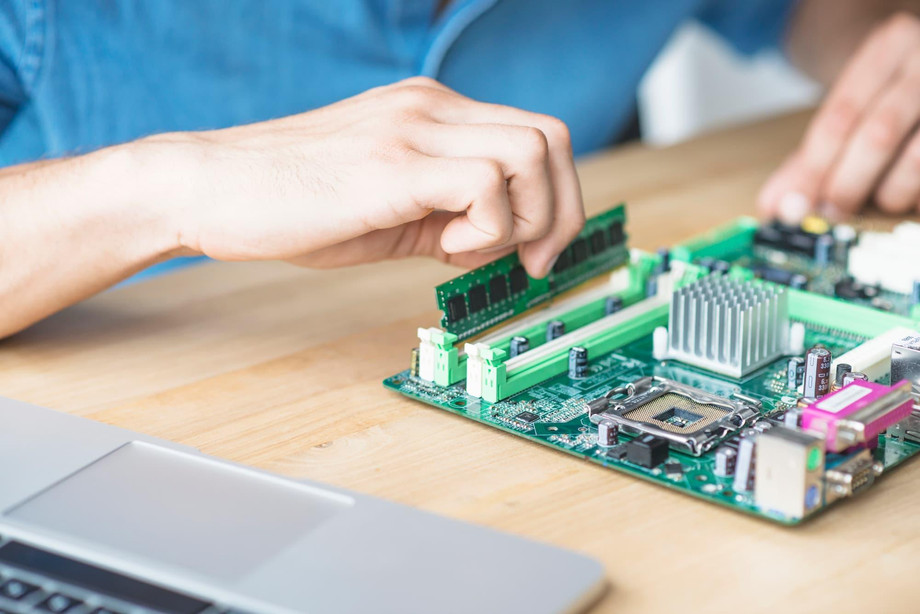The robotics industry is undergoing a significant transformation, primarily fueled by advancements in embedded system development. As the backbone of modern robotic applications, embedded systems play a pivotal role in enhancing functionality, improving efficiency, and enabling the integration of advanced technologies. This blog delves into how innovations in embedded systems are driving growth in the robotics sector, examining key trends, challenges, and future prospects.
Understanding Embedded Systems in Robotics
Embedded systems are specialized computing units designed to perform dedicated functions within larger systems. In robotics, these systems manage everything from sensory input and data processing to motor control and decision-making. With the increasing complexity of robotic applications, the demand for sophisticated embedded solutions has surged. Modern embedded systems are characterized by their ability to support real-time processing, integrate artificial intelligence (AI), and facilitate communication across various network protocols.
Key Innovations in Embedded System Development
1. Miniaturization of Hardware
One of the most significant trends in embedded system development is the miniaturization of hardware. Advances in semiconductor technology have led to the creation of smaller, more powerful microcontrollers and processors. This miniaturization allows for more compact robotic designs without compromising performance. Robotics applications, such as drones and autonomous vehicles, benefit immensely from lightweight components that enhance mobility and reduce energy consumption.
2. Integration of AI and Machine Learning
The integration of AI and machine learning algorithms into embedded systems is revolutionizing robotics. These technologies enable robots to learn from their environments, adapt to changing conditions, and make informed decisions. For instance, robots equipped with embedded AI can recognize objects, navigate complex terrains, and even interact with humans in a more intuitive manner. This shift towards intelligent robotics is opening new avenues for applications in manufacturing, healthcare, and logistics.
3. Enhanced Connectivity
The rise of the Internet of Things (IoT) has transformed how embedded systems communicate. Robotics is increasingly relying on enhanced connectivity to facilitate data exchange and interoperability between devices. Embedded systems now incorporate advanced communication protocols, such as Bluetooth, Wi-Fi, and cellular networks, allowing robots to share information and operate collaboratively. This connectivity is crucial for applications in smart factories and remote monitoring, where real-time data analysis is essential.
4. Improved Energy Efficiency
As sustainability becomes a priority across industries, innovations in embedded system development are focusing on energy efficiency. New power management techniques and energy harvesting technologies are being integrated into robotic designs to extend operational time and reduce energy costs. These advancements are particularly beneficial for mobile robots and autonomous vehicles, which often operate in environments where recharging options are limited.
Challenges in Embedded System Development for Robotics
While the innovations in embedded systems present numerous opportunities, several challenges need to be addressed to fully harness their potential in the robotics industry.
1. Complexity of System Integration
Integrating various components and technologies into a cohesive robotic system is a complex task. The increasing sophistication of embedded systems means that developers must navigate a myriad of hardware and software interfaces. Ensuring seamless communication and functionality between these components can be challenging and requires expertise in multiple domains.
2. Security Concerns
With enhanced connectivity comes increased vulnerability to cyber threats. As robots become more interconnected, they are also more susceptible to hacking and unauthorized access. Developers must prioritize security measures in their embedded systems to protect against potential attacks that could disrupt operations or compromise sensitive data.
3. Regulatory Compliance
As robotics applications expand into regulated industries such as healthcare and transportation, compliance with industry standards and regulations becomes critical. Embedded system developers must stay informed about the evolving regulatory landscape to ensure their products meet safety and operational requirements.
The Future of Embedded Systems in Robotics
The future of embedded system development in the robotics industry looks promising, with several trends poised to shape the landscape:
1. Advanced Robotics Applications
As embedded systems continue to evolve, we can expect the emergence of more advanced robotics applications. From autonomous drones delivering packages to robotic assistants in healthcare settings, the possibilities are endless. Innovations in sensor technology and AI will further enhance these applications, allowing robots to perform complex tasks with greater precision and reliability.
2. Collaborative Robots (Cobots)
The rise of collaborative robots, or cobots, represents a significant trend in the robotics industry. These robots are designed to work alongside humans, enhancing productivity and safety in various environments. Embedded systems will play a crucial role in ensuring that cobots can effectively communicate and interact with human operators while adhering to safety protocols.
3. Global Market Growth
The global robotics market is projected to grow exponentially in the coming years. As industries across the globe adopt robotic solutions to improve efficiency and reduce costs, the demand for advanced embedded systems will rise. This growth presents an opportunity for developers to innovate and deliver cutting-edge solutions that cater to diverse market needs.
Conclusion
Innovations in embedded system development are at the forefront of driving growth in the robotics industry. By enabling the integration of advanced technologies, enhancing connectivity, and improving energy efficiency, embedded systems are transforming how robots operate and interact with their environments. As challenges such as system integration, security, and regulatory compliance are addressed, the future of robotics looks bright. With ongoing advancements in embedded systems, the possibilities for the robotics industry are boundless, promising to reshape the way we live and work in the years to come.
To Know More About embedded system development

